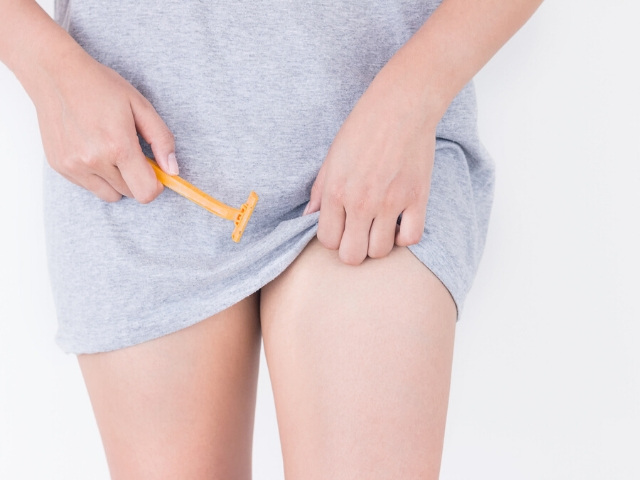Removing pubic hair is a personal preference. Some girls trim their bush, or attend a salon to go through a “bikini wax”; others choose to shave almost on a daily basis, but most just leave it alone. It’s not necessary to get rid of the hair in this area to keep your body clean. In fact, there are not any health benefits of removing pubic hair. However, that doesn’t mean women do it. This is why in this article, we will discuss vaginal hair removal and the best ways to do it.
5 Best Ways to Remove Unwanted Pubic Hair
Home Removal Options
Shaving
Some girls say that shaving crotch hair is “high maintenance” because the hair usually grows back in barely one or two days. In the meantime, your genital area can feel itchy and prickly because the skin in this area is extremely sensitive. If you would like to keep the area hairless and smooth, you ought to invest in good tools such as scissors, razor, shaving soap or gel, or your own electric razor, and plan on shaving every few days.
Over-the-Counter “Depilatories” or Cream Hair Removers
This method of hair removal is painless, but it’s important to remember that not all “depilatories” are safe to use on your vulva or “bikini line.” take care to read the merchandise label first to make sure it’s safe to use on your vulva, and follow the directions exactly and in order. Don’t leave the cream on any more than the directions say.
Professional Options
Waxing
A thin layer of warm liquid wax is applied over the hair you would like to get rid of. Next, a skinny cloth-like material is placed over the wax before it hardens. It takes a few seconds for the wax to get hard. Once hard, the material strip is quickly pulled off. This method of hair removal usually stings (when the material is pulled off). Waxing is different than other hair removal methods because the hair is far away from the root so it doesn’t grow back as quickly. If you opt to get rid of your pubic hair using the wax method, it’s best to get it done at a salon or spa that gives waxing as an everyday part of their services. If the wax is just too hot, you’ll burn your skin. Never shave before waxing.
Laser Hair Removal
Laser hair removal is a procedure that uses a strong beam of light that penetrates the skin to destroy the hair follicle. The hair eventually falls out. Results can vary from person to person and a few people may notice temporary redness and swelling after the treatment. The procedure itself varies in length reckoning on how much hair is removed, and you want to wear protective eyewear throughout the treatment. Laser hair removal can be pricey and take 6 or more sessions. Sometimes it may not work. If you select this method of hair removal, first schedule a consultation with a health care provider who is board-certified in dermatology or facelift and who has experience with performing laser hair removal. Make sure the salon is clean and a copy of the provider’s certification is on display.
Medical Treatments
Electrolysis
This method permanently removes the hair. A needle-shaped electrode is employed to destroy the hair root. Treatments are usually once every week or every other week for a few years to completely remove all the hair roots. Each session can last 15-60 minutes and the cost can vary depending on the location and other factors.
Safety
- Try to use a hand mirror so you can see the area you want to shave.
- Try to trim as much hair as possible before you begin shaving. Do not use a dull pair of scissors.
- Try to soak in the tub for at least 5 minutes to soften the skin and pubic hair before you shave.
- Apply shaving cream or gel with aloe vera or another soothing agent (made for women) over all the areas you plan to shave. Reapply as needed.
- Always use a new/sharp razor or “bikini” razor. Please do not use a dull blade. Try a razor with a built-in moisturizing strip.
- You should always hold the skin tight with one hand and shave with the other hand. Avoid using too much pressure.
- Shave in the direction that the hair grows, using slow strokes.
- Rinse your skin with warm water after you are done shaving and then pat dry.
- Apply baby oil or lotion with aloe vera to the shaved area when you’re done. Avoid scented products because they’ll sting your skin.
Risks
- Razor burn (rash)
- Redness
- Cuts, pimples and/or blisters
- Itching
- Infection within the hair root – the medical term for this is often “folliculitis”. Shaving is a common cause.
Conclusion
Removing pubic hair could seem to be trendy, but that doesn’t mean you’ve got to do it. However, if you do plan to remove your crotch hair, make sure it’s your decision and do it safely. If you’ve got a chronic disease, ask your health care provider if there are special reasons why you shouldn’t shave your hair. Call your health care provider if you develop folliculitis or symptoms of infection.













